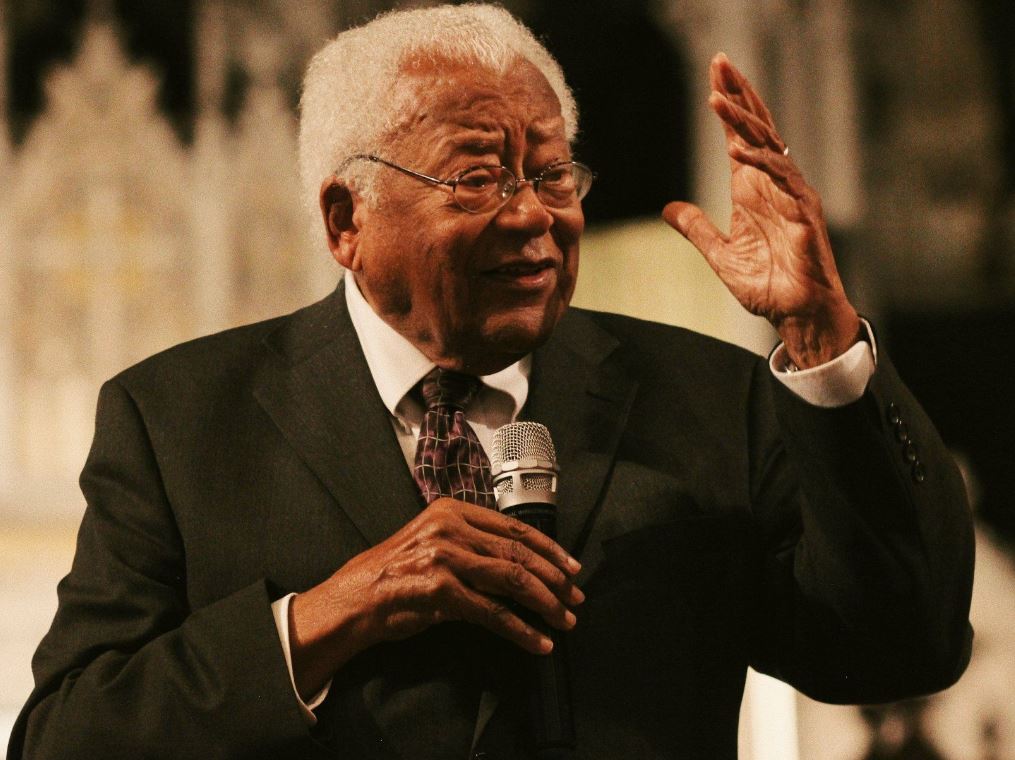Introduction: The Bridge between Ideals
James Lawson, an indomitable advocate of nonviolence, traversed continents to make Gandhian principles practicable. His life’s work connected India’s fight for independence with the American civil rights movement, creating a powerful legacy that inspires defiant optimism and enduring activism.
The Early Journey: Inward Reflection and Outward Action
James Lawson’s journey began with introspection during his high school years. He recognized that the teachings of “turn the other cheek” and “pray for the enemy” were not passive principles but foundational to an active resistance movement. This early realization shaped his approach to nonviolence, seeing it as a dynamic and transformative force.
Formative Years in India: Embracing Gandhian Nonviolence
In the early 1950s, Lawson’s refusal to be drafted into the American army led to a 13-month imprisonment. Upon release, he moved to Nagpur, India, to teach at Hislop College. Here, he immersed himself in the study of Gandhian nonviolence, learning from Gandhi’s followers and refining his understanding of active resistance. This period was pivotal in developing his methodology, combining Gandhian principles with the teachings of Jesus.
The Catalyst: Montgomery Bus Boycott
While still in India, Lawson witnessed the Montgomery Bus Boycott of 1955-56, a significant protest against racial segregation in public buses in Montgomery, Alabama. Rosa Parks’ refusal to give up her seat and her subsequent arrest became emblematic of the struggle against racism. This movement’s success reinforced Lawson’s belief in nonviolent resistance and prepared him for the challenges ahead in the United States.
Returning to America: A New Chapter in Nonviolent Resistance
Upon his return to the United States in 1956, Lawson joined forces with Martin Luther King Jr., whose movement had gained momentum. King recognized the need for rigorous training in nonviolent tactics and urged Lawson to relocate to Nashville, Tennessee. There, Lawson trained thousands of activists, preparing them for direct action against segregation and racial injustice.
The Strategist: Crafting Nonviolent Tactics
Lawson’s approach to militant nonviolence involved the strategic use of nonviolent pressure. He organized interracial teams to challenge segregation laws by sitting at whites-only lunch counters. These actions, meticulously planned and executed, were instrumental in desegregating public spaces across the southern United States. King’s acknowledgment of Lawson as a leading theorist and strategist of nonviolence underscores his significant role in the civil rights movement.
Unwavering Resolve: Post-King Assassination
King’s assassination in 1968 was a profound loss for the movement. However, Lawson’s resolve only strengthened. He demonstrated his unwavering commitment by visiting and befriending King’s assassin, James Earl Ray, even conducting his funeral service thirty years later. Lawson’s actions exemplified his deep faith in reconciliation and nonviolence.
Enduring Opposition: Critic of Militarism
Throughout his life, Lawson vocally opposed America’s military interventions, describing the US as “the number one enemy of peace and justice in the world.” His criticism was rooted in a steadfast belief that true justice could only be achieved through nonviolent means. Even in his later years, Lawson’s voice remained a powerful critique of militarism and advocate for peaceful resistance.
Modern Relevance: Black Lives Matter and Beyond
Lawson saw the Black Lives Matter movement as a continuation of the struggle against systemic racism. He called for dismantling old forms of racist violence and replacing them with new forms of kinship. Lawson’s legacy is a beacon for those who see love as an active force in the fight for justice, offering practical guidance and inspiration for modern activists.
Conclusion: A Beacon and an Anchor
James Lawson’s legacy serves as both a beacon and an anchor. It draws in those who recognize the power of love and nonviolence in the struggle for justice. Through the comprehensive documentation of his methods, Lawson provides practical guidance for those on the path of defiant optimism. His life’s work reminds us that the quest for justice and kinship is ongoing and ever-relevant.
Summary Table:
| Key Learning Points | Description |
|---|---|
| Early Journey | Lawson’s early realization of nonviolent principles as active resistance. |
| Formative Years in India | Immersed in Gandhian nonviolence, combining it with the teachings of Jesus. |
| Montgomery Bus Boycott | Influenced by the boycott, reinforcing his belief in nonviolent resistance. |
| Return to America | Joined Martin Luther King Jr., training activists in nonviolent tactics. |
| Nonviolent Tactics | Strategically used nonviolent pressure to challenge segregation laws. |
| Post-King Assassination | Strengthened resolve, exemplified by befriending King’s assassin. |
| Critic of Militarism | Vocal opposition to America’s military interventions, advocating for peace. |
| Modern Relevance | Black Lives Matter as a continuation of the fight against systemic racism. |
| Beacon and Anchor | Lawson’s legacy inspires and guides justice seekers with practical nonviolent methods. |
Advanced Vocabulary Table:
| Word | Meaning |
|---|---|
| Indomitable | Impossible to subdue or defeat. |
| Practicable | Capable of being done or put into practice successfully. |
| Emblematic | Serving as a symbol of a particular quality or concept; symbolic. |
| Unwavering | Steady or resolute; not wavering. |
| Reconciliation | The restoration of friendly relations. |
| Systemic | Relating to or affecting the whole system. |
| Relevance | The quality or state of being closely connected or appropriate. |
| Steadfast | Firm and unwavering. |
| Comprehensive | Complete; including all or nearly all elements or aspects of something. |
| Indelible | Making marks that cannot be removed; not able to be forgotten or removed. |

Sunil Garnayak is an expert in Indian news with extensive knowledge of the nation’s political, social, and economic landscape and international relations. With years of experience in journalism, Sunil delivers in-depth analysis and accurate reporting that keeps readers informed about the latest developments in India. His commitment to factual accuracy and nuanced storytelling ensures that his articles provide valuable insights into the country’s most pressing issues.



